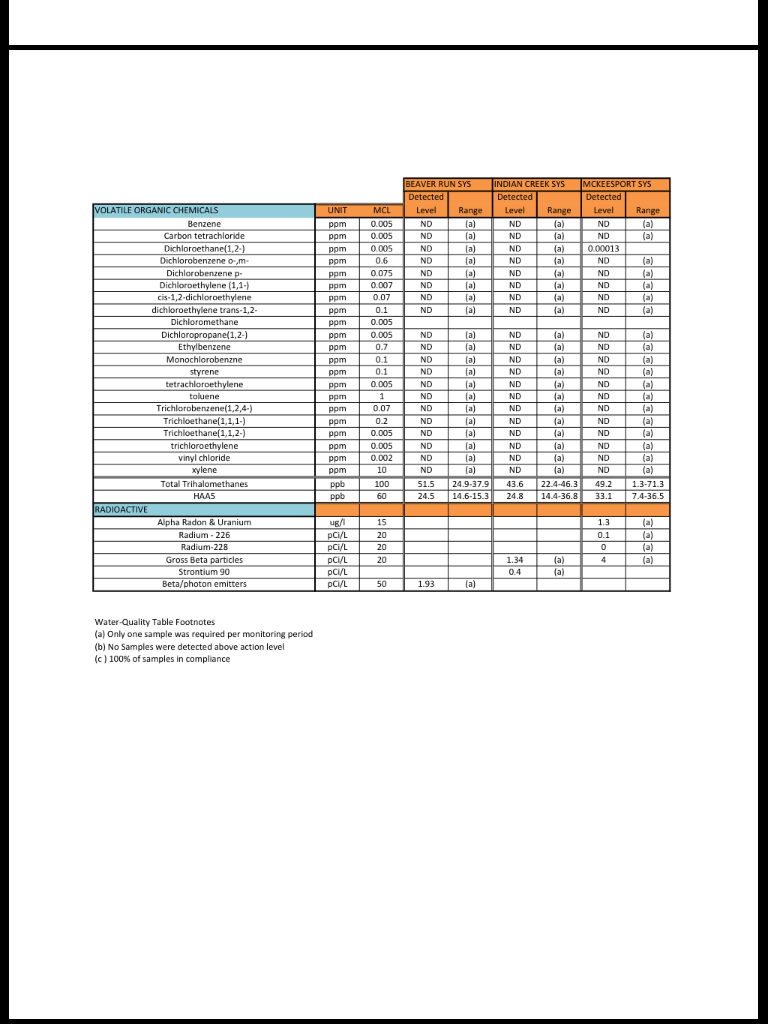Sodium, Na - 25
Calcium, Ca - 26
Magnesium, Mg - 6
Sulfate, SO4-S - 13
Chloride, Cl - 48
Bicarbonate, HCO3 - 44
Total Alkalinity, CaCO3 - 36
^This info is what is most important and what you will be using with water calculators such as EZ Water or Bru'n Water. I hightly recomend using and gettign a feel for Bru'n Water. As is, you have some nice water for middle of the road beers. Blonde Ales, Cream Ales, Light beers, etc. It is also great water to build on. What kind of beers do you normally brew, which ones seem to come out the best in your opinion?
The low Alkalinity and Bicarbonate will make it possible to make good light beers (Cream Ales, Pilsners, Kolsch, etc) with little adjustment needed. Brewing darker beers like Porters and Stouts, your low alkalinity might make for too low of a mash ph. Dark beer grain bills are much more acidic. You might need to add alkalinity for darker beers. Alkalinity is a measurement of buffering power your water will have that resists ph change due to grist composition in the mash. High alkalinity in water keeps mash ph high when making light beers, affecting beer flavor and character because it affects everything downstream from the mash. High alkalinity will require heavier amounts of acid to drop mash ph. On the other hand, low alkalinity like you have will not "put up as much of a fight" if that makes sense and it will be easier to hit a target mash ph without as much acid or salt additions.
A bit more calcium would be good, but you will be adding calcium from Gypsum and Calcium Chloride if you start playing with your water. Higher calcium content does help clarity and stability in the finished beer and has benefits in the mash but what you have is also just fine. Aside from all that, your sulfate and chloride tell how your beer will comes across for lack of a better term. Sulfate can make beers seem drier, crisper...some say it brings out the hops, makes the hops "pop"...however you want to look at it. Sulfate (Calcium Sulfate AKA Gypsum is good to add to Pale Ales, British Bitters, IPA's). Chloride does the opposite, especially paired with sodium (Na) which your water has a good amount off. To me chloride brings a smoothness, increases malt character, rounds out the flavor. Calcium Chloride is good to add to Porters, Stouts, Amber Ales...etc. Since your water has more Chloride than Sulfate, your beers will probably seem more neutral, balanced, etc.
That's the jist of it, I know you are going to have questions, ask away! Just remember, it doesn't have to be complicated, and it's really not. Start off by using the water you have, be sure to check mash ph, make adjustments if it's out of range. It may be just fine for most beers you brew. You may just need to pay special attention to darker beers, but checking (measuring) is the only way to know...just like having your water tested, how else would you know. Use your water as is, taste what your water brings to the beer. Then experiment with adding gypsum to hoppy beer styles you brew and try adding chloride to darker beers like Porters and Stouts. Your water is not what is important so much, it's how your water drives your mash ph that is the big picture and then having sulfate, sodium and chloride be your "seasonings". I don't chase water profiles, the exact amounts aren't that important to me, the impact to the finished beer is. It doesn't take much to make improvements. I'm not implying you need any adjustments, you may be perfectly happy with the beers you brew as is, just saying there are different things to try. It can help to make adjustments to different styles, to make the beer better, it's a given that the same water will not be best for all the beers you brew, that goes for anyone. This is why certain beers are brewed in different parts of the world. You can't brew a German Pilsner with highly alkaline Dublin Water (they brew Stouts, Porters and dark Irish Reds because of the water) and you can't brew a good Porter with water from Pilsen without changes to the water (Pilsen water is too low in mineral content, the large amount of dark grains would plument the mash ph). Those are extreme examples, but just trying to help you understand.
I have a lot of info I can post or message you if interested.









